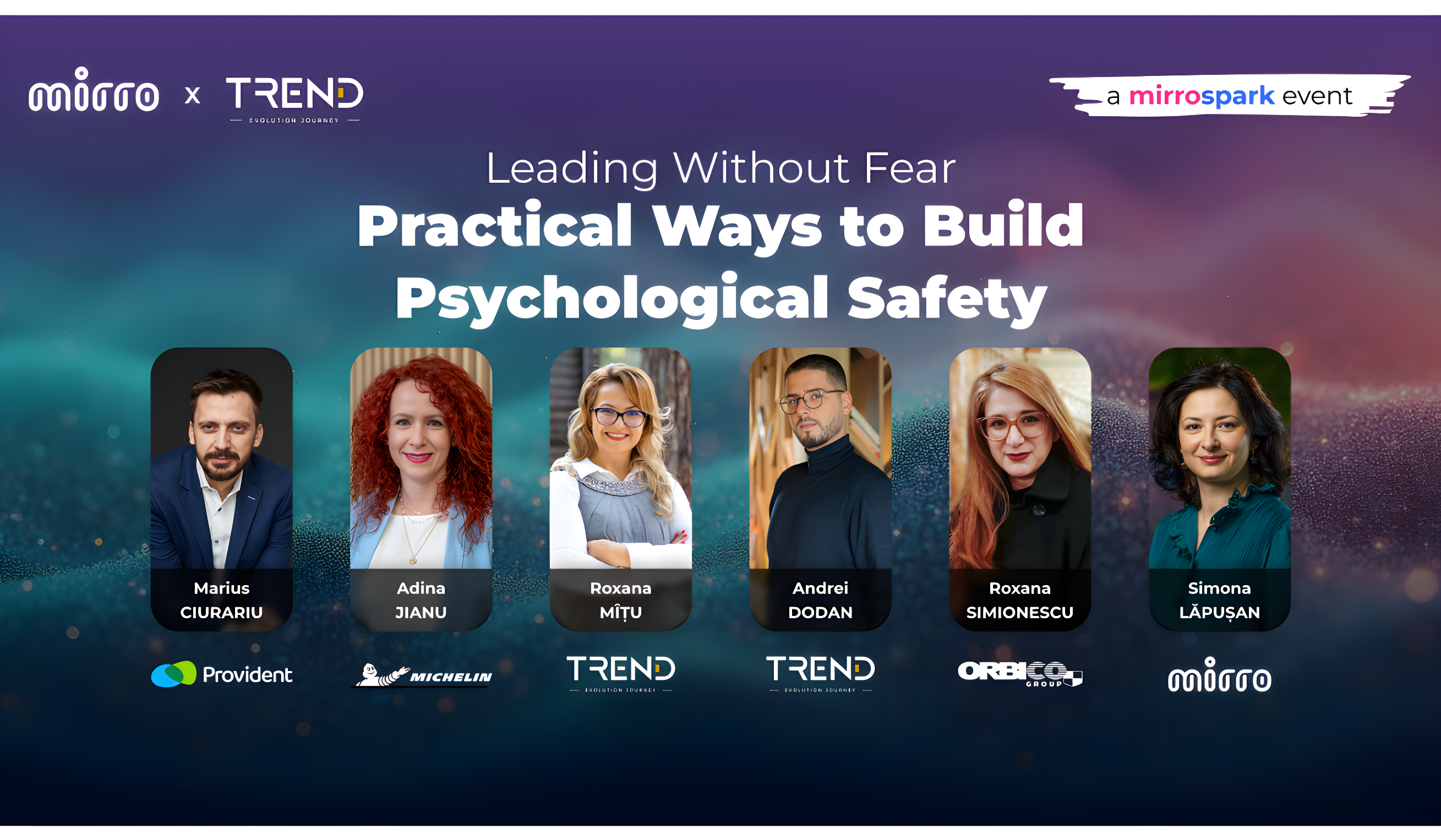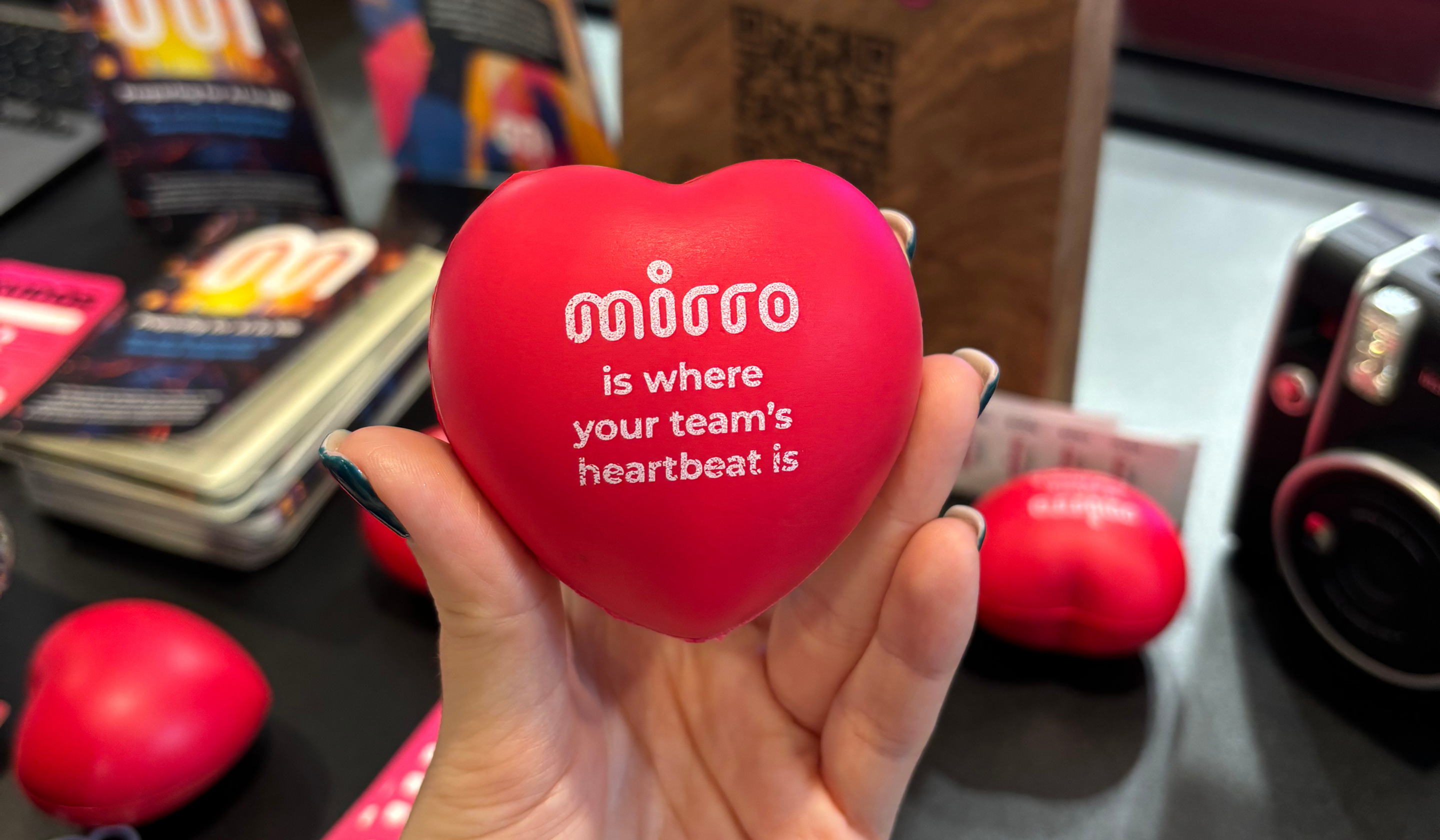SECTION
Building Psychological Safety in the Workplace: Insights from Industry Leaders

Listen to this article:
On June 3, 2025, we hosted an in-person event about psychological safety with only one goal in mind: to get the concept out of the books and bring it into the day-to-day reality of organizations: in conversations between managers and teams, in tense feedback, in tough decisions, and in encouraging brave ideas.
Our panel brought together experienced leaders with different perspectives, all determined to achieve the same goal: creating an environment where people feel safe to speak up, be themselves, and grow.
With Simona Lăpușan, Mirro's CEO and founder, as our moderator, the panel shared real experiences about building a workplace based on trust and courage. Here's what we learned from them:
Why does psychological safety still feel rare sometimes?
We began the event with an open discussion centered on the reasons why psychological safety is sometimes lacking despite its growing relevance over the past few years.
Andrei Dodan, Senior Consultant at Trend Consult Group, pointed out that many of us grew up without psychological safety. It's what we've learned through school, work, and life. That puts extra pressure on HR teams and leaders to change the default.
Inclusion is not always visible. But its absence is always felt.
The discussion touched on multiple subtle signs of exclusion, such as a new colleague feeling like an outsider, someone always eating lunch alone, or humor that veers into sarcasm and leaves others feeling diminished. These moments can chip away at safety, slowly and silently.
Andrei captured this well when he spoke about blind spots. Often, those who exclude don't realize it. This is why honest and continuous feedback, awareness, and team reflections are so vital. It's also why many leaders now rely on tools that surface these dynamics early before they solidify into the culture.
%20copy.png?width=2880&height=1680&name=Interview%20with%20Max%20Blumberg%20(1)%20copy.png) Interactive sessions at Mirro's event
Interactive sessions at Mirro's event
How can we engage top management to support psychological safety initiatives?
Our panelists emphasized that building psychological safety isn't just HR’s responsibility. It starts when leaders see its value, not as a nice-to-have but as a way to do better business.
Roxana Mîțu, HR Manager at Trend Consult Group, added a key point: psychological safety is not only about the mindset but also about processes. Leaders, managers, and HR need to believe in its value if they're going to support it in a real way. She further pointed out that sometimes, HR and ops managers need to stop doing "patchwork" with isolated programs and let the CEO face the real issues in the organization.
Marius Ciurariu, HR Director at Provident Financial Romania, reminded us that it is not about complex programs but about leaders being present and willing to listen. Being fully present, especially as a manager, and engaging in honest dialogue, even when it's uncomfortable, is where trust starts.
One thing that worked for Orbico Group was using internal surveys to show patterns and support the need for action. This helped Roxana Simionescu, Organisation & People Development Manager at Interbrands Orbico, to initiate conversations with decision-makers who were unaware of the silent signals.
What are the signs that psychological safety is missing from your organization?
Sometimes, people don't say anything, and that's a sign in itself. Our panelists shared a few behaviors that should raise red flags in the workplace:
- People who constantly avoid conflict or feel afraid to disagree;
- Teams that are "split";
- New joiners who feel left out or only talk to their onboarding buddy;
- When everything seems "too fine" and no one talks about challenges;
- Visible stress signals, like burnout or physical signs;
- A lack of trust between team members, not feeling they can rely on each other;
- When sarcasm and irony are used as cover-ups.
Adina Jianu, Competency Development Manager at Michelin, shared a story many HR leaders can relate to: a team fragmented into mini-groups, each functioning independently. The manager, although he was unhappy with the team not working as one, hesitated to intervene. The issue is that without trust between colleagues, goals remain out of reach. Her insight was clear: performance can't thrive in silos.
Moreover, our panelists identified some behaviors and patterns that quietly hurt team dynamics and block psychological safety:
- Leaders who always have the final word;
- Teams that laugh at others' ideas under the excuse of "just joking";
- Managers who ignore exclusion or leave new people to figure things out on their own.
What can we actually do?
Start with what you have. You don't need a big budget to create a psychologically safe environment for your people. Marius said it clearly: "It's not HR's job alone. The management team must lead this."
Small wins matter: encourage people to ask for help, give them space to share mistakes and model open and constructive feedback.
A psychologically safe workspace is built together, and Mirro supports this culture with tools that give people a voice and encourage real dialogue. Mirro creates a context where people feel seen, heard, and safe to be vulnerable through continuous feedback, recognition, surveys, and structured performance check-ins
So, if you, too, want to take psychological safety and a culture of open feedback to the next level, now's a good time to discover how Mirro can help.
Final thought
We hope you bring these lessons back to your teams. And if you're ready to put them into practice, we're here to support you.
If you weren't able to join us at the event, we hope these takeaways offer both reflection and inspiration. And if you're ready to take the next step in building a safe, connected culture, Mirro can help you start where it matters most: with your people.




.jpeg)

